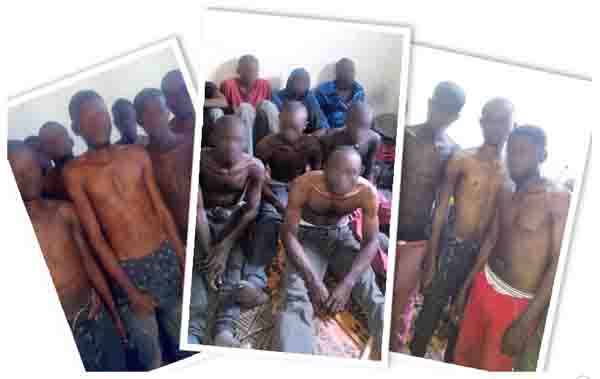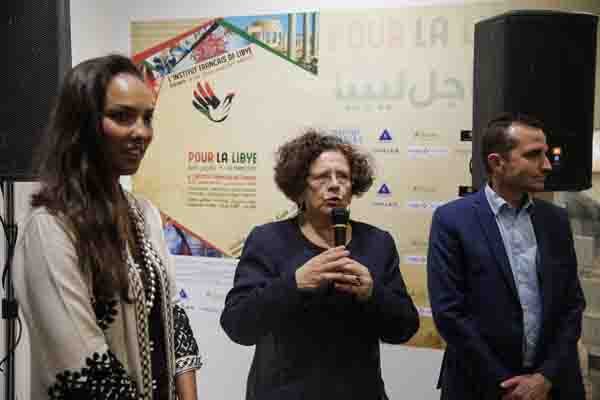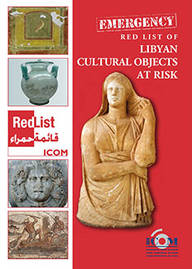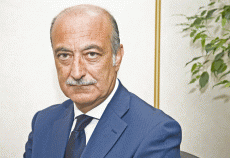By Umar Khan.
Tripoli, 8 June:
More than 200 members of the Al-Awfeya Brigade armed with 14.5mm . . .[restrict]anti-aircraft guns and automatic weapons briefly took over Tripoli International Airport on Monday afternoon. Their action was in protest at the disappearance the day before of the head of the brigade, Abu Ajila Habshi. After sporadic clashes that lasted less than an hour, the outnumbered members of the Awfeya Brigade surrendered to the forces of the Brigades’ Union of the Revolutionaries of Tripoli, a government-controlled group. Brief though it was, the takeover had the world believing that Libya was indeed in chaos and made Libyans furious because the image of steady progress made in the past couple of months was being spectacularly blown apart.
According to sources from both the Ministry of Defence and the brigades, more than 172 people were taken prisoner and held in three different locations in Tripoli. According to initial lists, the figure was 172 but it was later confirmed that the number was actually higher, some names not appearing on the lists. Sources also alleged that a few incidents had taken place in which cars with Tarhouna number plates had been stopped and the occupants arrested.
The Ministry of Defence took control of one of the two tanks brought by the Awfeya Brigade; the other had been destroyed by fighters. Contrary to one story that a Zintani brigade, based next to the airport was the first to respond to the takeover by the Awfeya Brigade, it is now known that they simply established checkpoints on the main road and made their way inside the airport when the revolutionaries from Tripoli had already taken prisoners.
The Awfeya Brigade is no ordinary brigade from Tarhouna but an experienced brigade that fought in Misrata until they went to Tarhouna after the liberation of Tripoli. It is led by the now-missing Habshi and, like many brigades, it now operates under the Ministry of Defence. It has often been deployed by the National Army in difficult situations in order to maintain law and order, as in Sebha and the Al-Jmail-Zuara clashes.
The whole problem began with the disappearance of Habshi in Tripoli.
He left Tarhouna on Sunday with two tanks to deliver to the National Army in Tripoli but was stopped at a checkpoint on the airport road and asked for permission letters from the authorities. In order to get hold the required documents, he headed to the Chief of Staff’s office in Janzour; That was the last that was heard of him.
His disappearance sparked unrest among his brigadesmen who then went to Tripoli that evening demanding his release. After assurances from the authorities, the men returned to Tarhouna. The next day, the Military Council of Tarhouna informed the authorities of a large armed convoy of the Awfeya Brigade heading towards the capital.
According to a source in the Defence Ministry, the information was received about 10am and by 11am was relayed to all relevant authorities. The expectation at that point was that the brigade would come to Tripoli to protest but nobody was expected any serious action. Consequently, it is said, officials failed to take any further measures.
The question is why, despite information of the armed convoy’s approach to the capital, no action was taken. And how could a brigade under the Ministry of Defence take such a step and ignore the basic rules?
The history of Habshi and his brigade are interesting and hold the answer to what happened on Sunday.
Habshi, a man who spent more than 10 years in prison because of his involvement in the failed coup attempt in 1993, along with other military figures such as Salim Al-Wa’air who now heads the 93rd Brigade in Bani Walid . Afterwards, many involved in the coup fled while several others, notably from Bani Walid, were executed. Habshi was spared as he swore that he had taken no part in the planning but provided only food.
With the turn of events after 17 February, he headed to Benghazi with others from Tarhouna, formed his own brigade and then went to Misrata by ship and fought there for several months before finally returning to Tarhouna.
Habshi has been accused of releasing war criminals in Tarhouna at the request of his old friend, Wa’air. It was Wa’air’s forces that in January drove the 28 May Brigade out of Bani Walid after a bloody fight in which at least eight people dead, since when NTC and government control over the town has been non-existent.
Wa’air, in order to gain popularity, has been accused of having used a forged stamp to issue documents in the name of the Military Council of Bani Walid authorising the release of criminals from prisons in Tarhouna. Habshi, who was then head of the Military Council of Tarhouna, was said to be directly involved in the releases, allegedly because of his close ties to Salim.
These releases angered many people, particularly the families of martyrs.
It is claimed that security officials were therefore deeply suspicious about Habshi and his intentions.
On his way to Janzour on Sunday, after he had been told he had to have documented permission to take the two tanks into Tripoli, he was stopped by a sedan with no number plate. Armed men got out and before Habshi could do anything, took him at gunpoint, along with the weapons in his car. His driver was left stranded as they grabbed his car keys and mobile as well.
Members of the Awfeya Brigade are certain that the men at the checkpoint on the airport road informed the authorities about his presence in Tripoli, an allegation the authorities vigorously deny.
According to sources, Habshi was then taken to a detention centre in one of the eastern districts of Tripoli for “interrogation”.
A usually reliable source in Tarhouna has claimed that there were concerns in official circles because of the growing cooperation between Habshi and General Khalifa Hiftar. Hiftar has been the subject of considerable speculation from the start of the revolution when he proclaimed himself commander-in-chief of Libyan Forces only to become, after intervention by the NTC, the third most senior army official.
This airport episode has given both officials and people a much needed jolt to reconsider policies and priorities and thus avoid any such future incidents.
As for the Tarhouna local council and its military council, both have not only distanced themselves from the airport attack but have actively condemned it.
It certainly seems fair that the people of the town should not be blamed for the actions of a brigade that was supposed to be operating under the Ministry of Defence. On the contrary, there are issues that the authorities, both civil and military, have to face up to, notably their grasp of the events and the speed at which the security apparatus responds to threats. There was widespread and deep public anger at the Tarhouna brigade’s actions. No one wants to see the nation embarrassed like this again.
Umar Khan can be found at twitter.com/umarnkhan
[/restrict]











